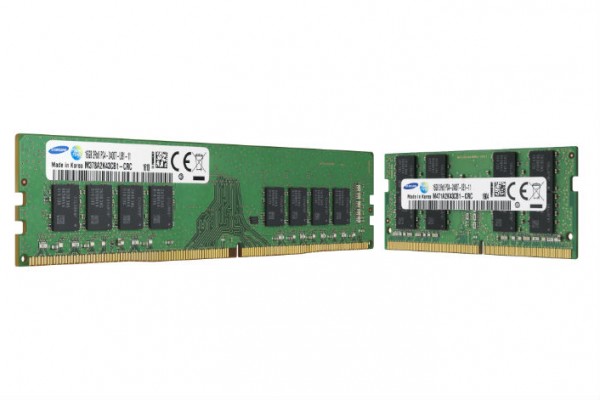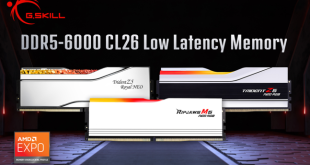Samsung has become the first company to begin mass producing 10nm-class DRAM, using a new process known as argon fluoride immersion lithography, which takes over from the previous extreme ultraviolet process. Samsung will be releasing 8GB DDR4 RAM using these new chips, which offer improved data rates and power efficiency over the previously used 20nm-class chips.
According to Samsung, these new 10nm-class DRAM chips can support data rates up to 3200 Mbps, which is up from the 2400 Mbps rate supported on 20nm, all while using between 10 and 20 percent less power.
Image Source: Samsung Newsroom
“Samsung’s 10nm-class DRAM will enable the highest level of investment efficiency in IT systems, thereby becoming a new growth engine for the global memory industry. In the near future, we will also launch next-generation 10nm-class mobile DRAM products with high densities to help mobile manufacturers develop even more innovative products that add to the convenience of mobile device users.”
As we go on throughout the year, Samsung will be introducing smaller 4GB modules for laptops and larger 128GB ones for servers. Samsung is also set to begin producing HBM2 this year, which we previously reported on.
KitGuru Says: Samsung has beat other memory makers to this punch thanks to its new process. It will be interesting to see just how well these new RAM modules perform compared to what is currently available.
 KitGuru KitGuru.net – Tech News | Hardware News | Hardware Reviews | IOS | Mobile | Gaming | Graphics Cards
KitGuru KitGuru.net – Tech News | Hardware News | Hardware Reviews | IOS | Mobile | Gaming | Graphics Cards




What about new LPDDR4 memory?
in all seriousness, does this effect the price of 16 and 32 gigabyte RAM modules? Really, can 10nm man tech drop the price of these? Really, if yes, we could be economically jumping ahead in DDR4 capacity per dollar
It should be able to 🙂